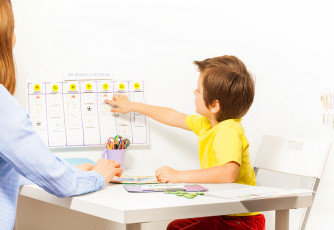
Dialogue
A calendar of targets for learning
To find reaching your target easier, for example, count to ten and to remember to continuously reach for that goal, a calendar or list of targets can come in handy.
A calender for kids
In every group and at every age it is useful for the child to understand what he or she still has to learn. To understand it better, it is advised to create an organised and easily understandable calendar, through which a child can follow their progress on their own.
The task goes like this: you create a calendar on a sheet of paper – one sheet for each month. Later on the sheet has to be divided into little boxes, in which you can write days and dates in (for smaller children you can divide the calendar and tasks into weeks, not months). Every month can have a different theme or different main topic/lesson, which will receive all the attention. After that in every little box you write in or stick in the topic or the result that has to be reached, for example, the letter A, 5+5, a poem for dad.
Next to that you can leave a blank box, in which you can draw in or stick in a little sun, if the result has been reached.
Valuable! While creating the calendar, children will also be able to understand the meaning of a year, month, week and day better. They will also understand, which months come after which and how days are arranged in a week.
Calendar for parents
Calendar for parents can look the same or completely different. The important part is that it is easily understandable and it can be put in a visible place, for example, the announcement board. In the calendar you can also put in the information that is needed for parents, for example, when they need to bring some specific materials, prepare a photo, when kids will taste unusual foods, etc.
Calendar will help parents understand what happens in the group and which topics are the ones that parents can draw more attention to (and, if necessary, help with). The calendar can also be a good starting point for conversations between teachers and parents about their children’s development.
Foto: Shutterstock.com

 Log In
Log In